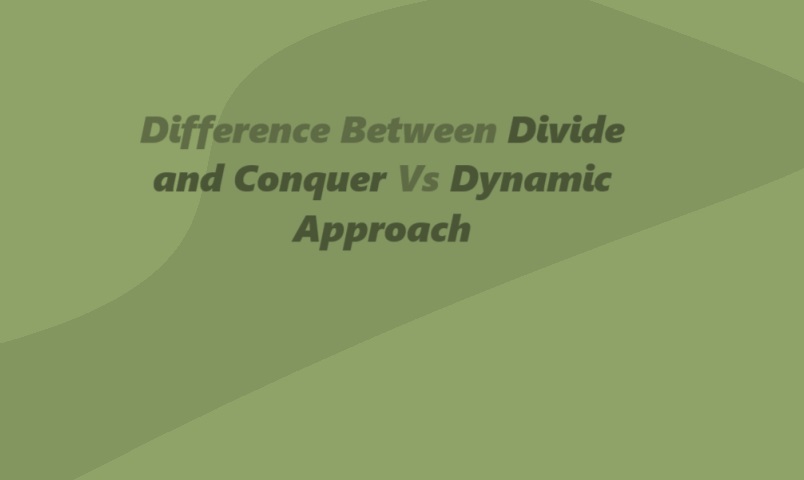When it comes to solving complex problems, there are various algorithms and approaches that can be used. Two commonly used techniques are the Divide and Conquer approach and the Dynamic programming approach. In this article, we will explore the differences between these two approaches, along with example code and explanations.
Divide and Conquer Approach
The Divide and Conquer approach is a problem-solving technique that involves breaking down a complex problem into smaller, more manageable subproblems. These subproblems are then solved independently, and their solutions are combined to obtain the final solution to the original problem.
Let’s consider an example to better understand the Divide and Conquer approach. Suppose we have an array of integers and we want to find the maximum element in the array. We can divide the array into two halves, find the maximum element in each half, and then compare the two maximums to determine the overall maximum.
int findMaximum(int[] arr, int start, int end) {
if (start == end) {
return arr[start];
}
int mid = (start + end) / 2;
int max1 = findMaximum(arr, start, mid);
int max2 = findMaximum(arr, mid + 1, end);
return Math.max(max1, max2);
}
In the above code, we recursively divide the array into smaller halves until we reach the base case, which is when the start and end indices are the same. We then return the element at that index as the maximum value.
Dynamic Programming Approach
The Dynamic Programming approach is a problem-solving technique that involves solving a problem by breaking it down into overlapping subproblems and storing the solutions to these subproblems in a table or an array. This way, we can avoid redundant calculations and improve the efficiency of the algorithm.
Let’s consider the Fibonacci sequence as an example to better understand the Dynamic Programming approach. The Fibonacci sequence is a series of numbers in which each number is the sum of the two preceding ones.
int fibonacci(int n) {
int[] dp = new int[n + 1];
dp[0] = 0;
dp[1] = 1;
for (int i = 2; i <= n; i++) {
dp[i] = dp[i - 1] + dp[i - 2];
}
return dp[n];
}In the above code, we use an array to store the solutions to the subproblems. We start by initializing the first two numbers of the Fibonacci sequence, and then we iterate through the array, calculating the value for each index by summing the previous two values. Finally, we return the value at index n, which represents the nth number in the Fibonacci sequence.
Differences Between Divide and Conquer Vs Dynamic Approach
Now that we have seen examples of both the Divide and Conquer approach and the Dynamic Programming approach, let’s highlight the key differences between them:
- Subproblem Dependency: In the Divide and Conquer approach, the subproblems are independent of each other, whereas in the Dynamic Programming approach, the subproblems have overlapping dependencies.
- Recursive vs Iterative: The Divide and Conquer approach is typically implemented recursively, while the Dynamic Programming approach is implemented iteratively.
- Redundant Calculations: The Divide and Conquer approach may involve redundant calculations, as each subproblem is solved independently. On the other hand, the Dynamic Programming approach avoids redundant calculations by storing the solutions to subproblems.
- Efficiency: The efficiency of the Divide and Conquer approach depends on the problem and the way it is divided, while the efficiency of the Dynamic Programming approach is generally better due to the avoidance of redundant calculations.
Read this: Understanding Algorithms: Design Techniques of Algorithms
It’s important to note that the choice between the Divide and Conquer approach and the Dynamic Programming approach depends on the problem at hand. Some problems are better suited for one approach over the other, and understanding the differences between them can help in selecting the most appropriate technique.
Conclusion
Both the Divide and Conquer approach and the Dynamic Programming approach are powerful problem-solving techniques. They have their own strengths and weaknesses, and the choice between them depends on the problem and its specific requirements.

